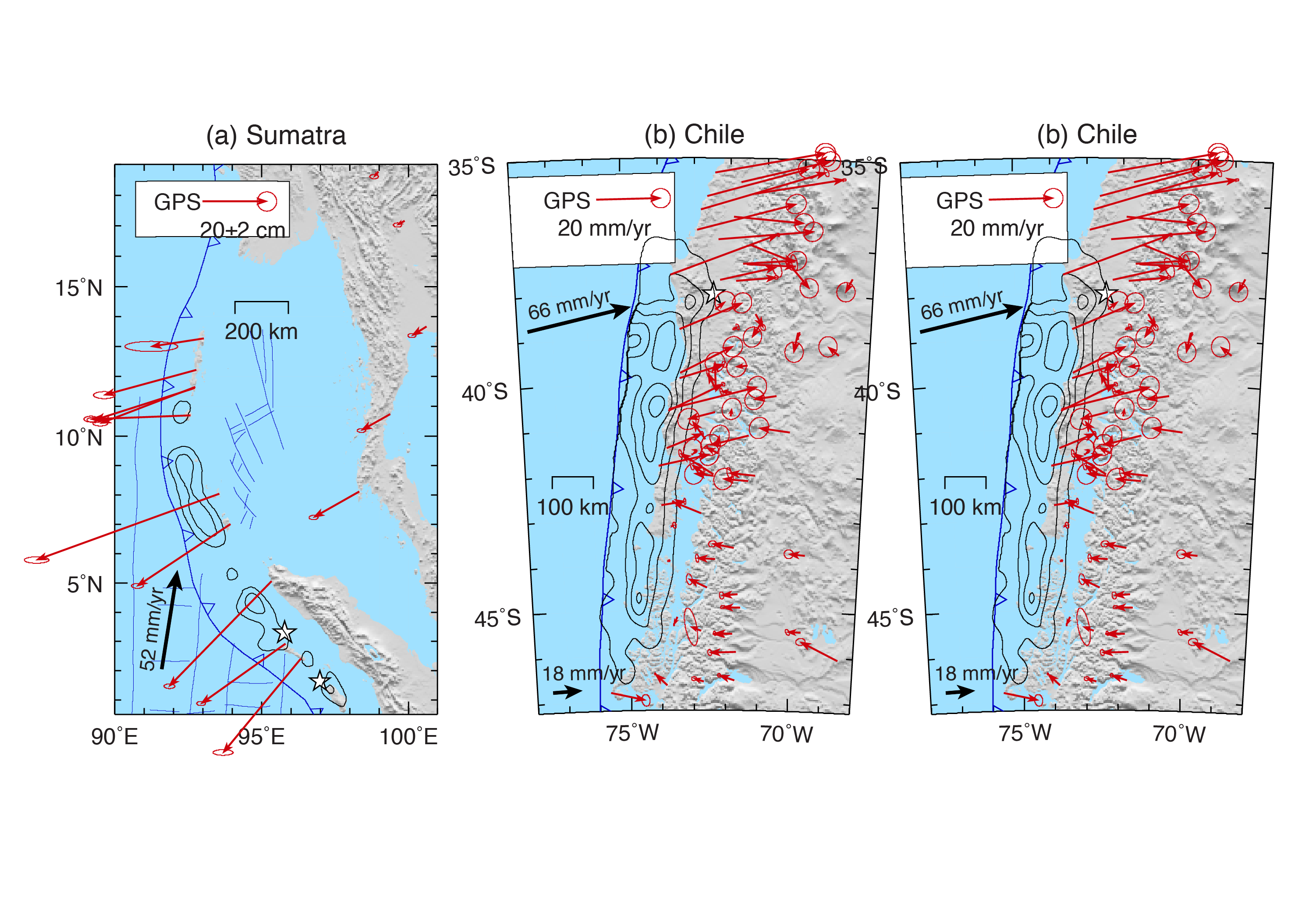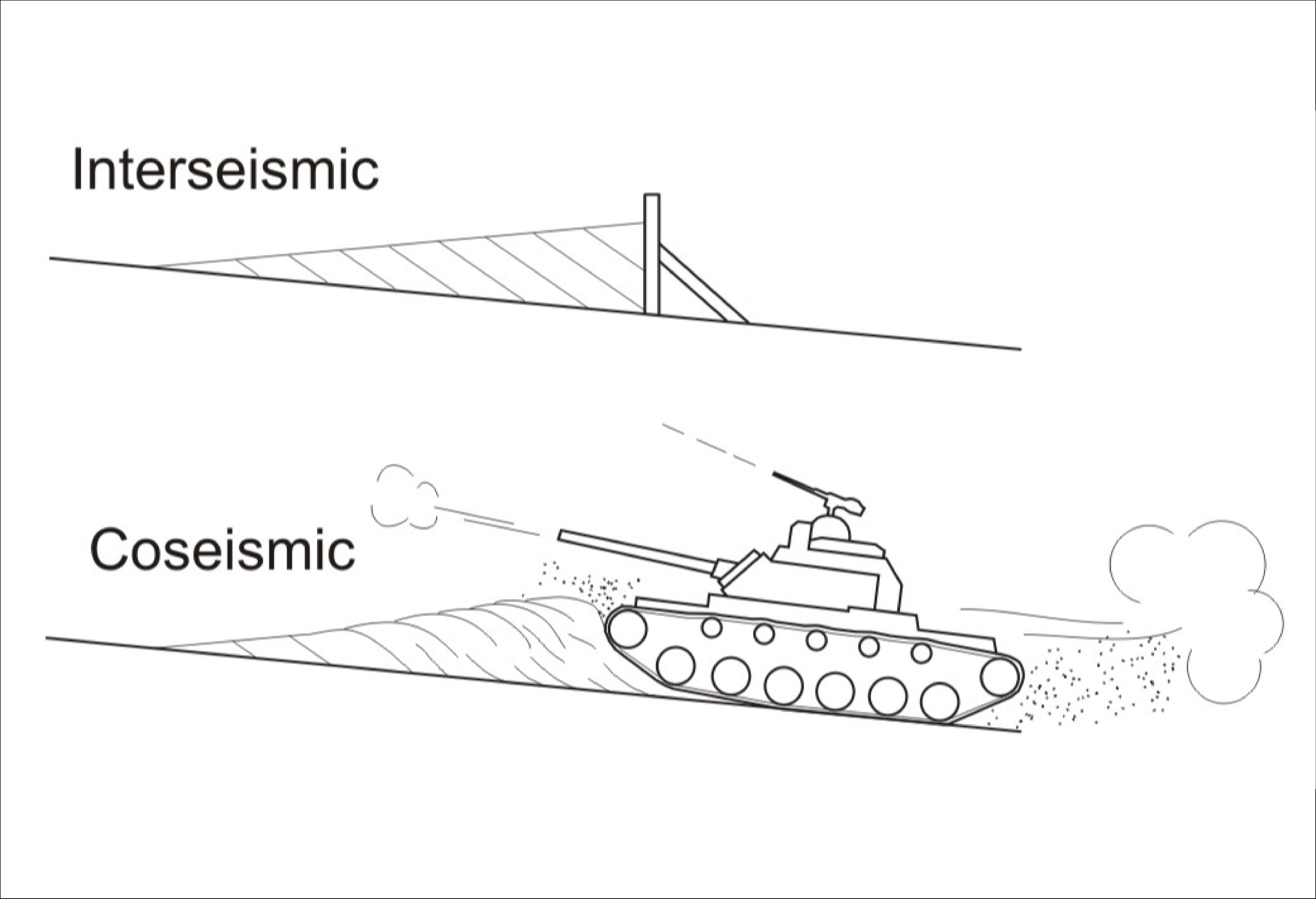


In this work, we proposed three primary deformation processes that control the earthquake cycle deformation of subduction zones, that is, the viscoelastic relaxation of the earthquake-induced stresses in the upper mantle, the continuous aseismic slip of the fault (afterslip), and the relocking of the fault. We used the following unified mechanical model to study three different subduction zones that are at different stages of an earthquake cycle. The model well fits the present GPS observations. Model results indicate that rheological structure and properties may be similar at different subduction zones. This work was published on Nature as a review article. Wang, K., Y. H
Read More
According to the dynamic Coulomb wedge model, coseismic strengthening of the shallowest part of the subduction interface can cause permanent deformation of the overlying outer wedge, so that the cumulative effects of great interplate earthquakes control the geometry of the wedge. In this work, we use a numerical model, which is a hybrid of the frictional contact model and the classical crack model, to study how stress is coseismically transferred from the seismogenic zone to the strengthening updip zone to cause wedge deformation. In this static model, the ‘‘critical strengthening’’ required to prevent the rupture from breaking the trench depends on the force drop of
Read More
In this work, we derived an Airy stress function analytical solution for an elastic-perfectly-plastic, submarine or subareal, infinite or finite, wedge with a frictional basal fault. Based on the analytical solution, we expanded the classical critically-tapered Coulomb wedge theory. The critical taper theory describes the stress state of a taper on the verge of either extensional or compressive failure. Our solution describes the stress state of a taper/wedge not only under critical failure but also at stable stages. We further developed the Dynamic Coulomb Wedge theory: The actively deforming, most seaward part of an accretionary prism (outer wedge) overlies the updip ve
Read MoreCopyright © Geodynamics Research Center,USTC/DSEL. All Rights Reserved.